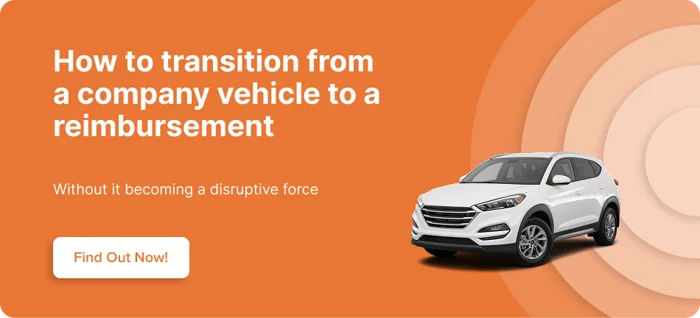A company car is an amazing perk to an employee, but a large expense for an employer. Here are three other ways to provide for employee business travel.
Costs and benefits of company cars
Company cars are an expensive investment for an organization. With both new and used car prices continuing to stay high, a company vehicle is a very valuable benefit for an employee.
Benefits of a company car
The benefits of a company car are large for the employee. Instead of having to make monthly car payments, pay for insurance, or cover maintenance costs, an employee gets the benefit of a nice vehicle for free.
For the organization, one benefit lies in the ability to control the company image projected by the vehicles. Another benefit is the ability to attract and retain top employees in a competitive job market.
Costs of a company car
For the employee, the costs of a company car depend on taxation. If the employee only uses it for business, then it is a tax-free benefit. But if the employee uses the car for personal use as well, the personal use is taxable. Also, the employee lacks a choice in what vehicle to drive.
The costs to the business are having purchase or lease the car but also insure and maintain it. This is a high set of costs right now, with the average cost of a new car hovering at around $48,000. New car prices may rise further as tariffs take effect.
Do company fleet costs outweigh benefits?
With insurance rates and maintenance costs also on the rise, the cost of maintaining a company fleet are higher than ever. Some organizations may consider whether now is a good time to transition away from some or all of their fleet.
If your organization is considering transitioning away from a company vehicle program or offering company vehicles to a smaller, more select number of employees, our guide to making that transition work smoothly can be a helpful tool.
3 company car alternatives
The top three alternatives to a company car each come with pros and cons. Each of these alternatives involves employees driving and maintaining their own personal vehicles while being reimbursed by the company. Which of these options offers the most upside?
1. Car allowance vs. company car
With a car allowance, the company pays a monthly stipend for the work use of a personal vehicle. The simplicity of this arrangement can be attractive. Unlike with a company car program, there is no need to distinguish between personal use and business use of the vehicle. The company just pays the monthly stipend, and that's it.
However, the payment is treated by the IRS as taxable income. And that's what makes it the least attractive option from the employee perspective. The employee goes from a very valuable benefit to a benefit that is immediately reduced by tax withholding. They now have to pay for and maintain a work vehicle while the payment intended to offset those costs is unlikely to actually cover all those costs because of taxes.
2. Mileage reimbursement vs. company vehicle
Paying a standard mileage rate the use of a personal vehicle will for many employees provide a more generous benefit than a standard car allowance. As long as the employer pays a rate equal to or less than the IRS standard business rate (the "safe harbor" rate), the payments are tax-free. The mileage rate for 2025 is 70 cents per mile.
This approach requires tracking business mileage and calculating payments based on that mileage. However, a properly managed company vehicle program also requires the tracking of business mileage in order to keep the benefit tax-free. So this should not be a change for employers or employees. The key is to use an accurate and automated mileage tracker that protects employee privacy.
Mileage reimbursement has two key shortcomings.
- Low-mileage drivers may be significantly under-reimbursed.
- High-mileage drivers can actually end up over-reimbursed.
Over time, this program could become increasingly costly for the company and not provide as many savings as expected in comparison to a company car program.
3. FAVR allowance vs. company car
The IRS recognizes another non-taxable approach to vehicle reimbursement called FAVR reimbursement, or a fixed and variable rate allowance. This program holds several key advantages over a car allowance or mileage rate, making it the most desirable alternative to a company car.
- Low-mileage drivers never get shorted, and high-mileage drivers cannot be over-reimbursed. By eliminating these discrepancies, a FAVR plan benefits everyone. It eliminates inequities in pay while preventing run away costs in the event that employees start accruing high mileage amounts.
- Drivers receive reimbursement rates optimized for their location. Neither car allowances nor mileage rates can offer this level of precision. As a result employees who live and work in expensive regions receive the same rate as employees who live and work in less expensive regions.
Employees switching from the benefit of a company car to a reimbursement for a personal vehicle may feel a loss. However, if the employer decides it is necessary to make the change, a FAVR allowance will likely prove the most satisfying alternative. Employees will appreciate the transparency of the rate they receive.
To learn more about how your company might benefit by switching to a reimbursement model, follow the link below or schedule a discovery call with mBurse.
